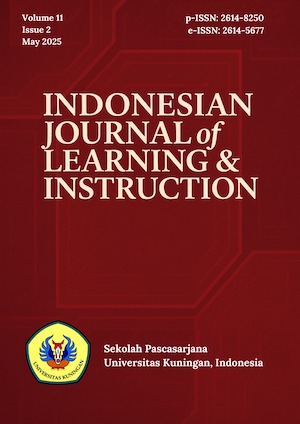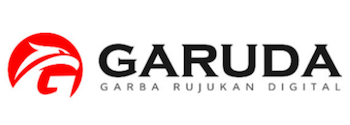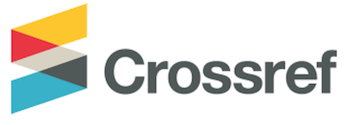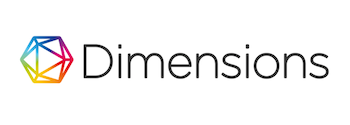SOCIAL MEDIA IN HIGHER EDUCATION AND ITS EFFECT ON GLOBAL CHALLENGE
Abstract
My interest of doing the research is to investigate the effect of social media in higher education on globalization. As the learning process changes, social media takes a step ahead to present itself to support the learning process in campus. Furthermore, students can communicate and share everything about the content of learning with their peers, lecturers, staff and others. The changes refer to available demand on access toward contents, schedules, and news, in different time, location and digital devices that provide the user with the chance to interact through comments, feedback and creative participation. The objective of the research is to describe the problems faced by the stakeholders of the higher education regarding the use of social media in higher education context. The research found that ignorance or lack of preparation were the most significant challenges. In fact, innovation in learning has converged with all application in mobile device, and the change of learning has led to the new management. The design of the research was a mixed method research quantitative and qualitative method. Data collection technique was done through observation, questionnaires and interview and data analysis. The result of the research showed that social media in higher education need to be implemented in university. And the effect in higher education needed to be incorporated into curriculum for the learning by social media and the adoption of social media as a teaching and learning process including the program of e-learning.References
Anderson, T., & Dron, J. (2017). Integrating learning management and social networking systems. IItalian Journal of Educational Technology, 25(3), 5-19. doi: 10.17471/2499-4324/950.
Anderson, J. Q., Boyles, J. L., & Rainie, L. (2012). The future impact of the Internet on higher education: Experts expect more-efficient collaborative environments and new grading schemes; they worry about massive online courses, the shift away from on-campus life. Retrieved from Pew Research Center http://www.pewinternet.org/files/old-media/Files/Reports/2012/PIP_Future_of_Higher_Ed.pdf.
Baruah, T. D. (2012). Effectiveness of social media as a tool of communication and its potential for technology enabled connections: A micro-level study. International Journal of Scientific and Research Publications, 2(5), 1-10.
Bauer, W., Hämmerle, M., Schlund, S., & Vocke, C. (2015). Transforming to a hyper-connected society and economy - towards an industry 4.0. Procedia Manufacturing, 3, 417-424. doi: 10.1016/j.promfg.2015.07.200.
Brown-Martin, G. (2017). Education and the fourth industrial revolution. Retrieved from Learning {Re}imagined: https://medium.com/learning-re-imagined/education-and-the-fourth-industrial-revolution-cd6bcd7256a3.
Cogburn, D. L. (2011). Globalization, knowledge, education and training in the information age. South Africa: SCRIB.
Dabbagh, N., & Kitsantas, A. (2012). Personal learning environments, social media, and self-regulated learning: A natural formula for connecting formal and informal learning. Internet and Higher Education, 15(1), 3-8.
Dabholkar, P. A., & Bagozzi, R. P. (2002). An attitudinal model of technology based self-service: Moderating effects of consumer traits and situational factors. Journal of Academy of Marketing Science, 30(3), 184-201.
Damanpur, F. (1991). Organizational Innovation: A meta-analysis of effects of determinants and moderators. Academy of Mangement Journal, 34(3), 555-590.
Datko, J. (2015). Social networking sites in higher education: Potential benefits and drawbacks. 10th international conference DisCo: From analog education to digital education (pp. 1-9). Prague: ePortfolio in the Czech Republic after the DisCo 2015 conference, 10.
Deborah, A., McIlrath, & Huitt, W. G. (1995). The teaching-learning process: a discussion of models. Retrieved from Educational Psychology Interactive: http://www.edpsycinteractive.org/papers/modeltch.html.
DiVall, M. V., & Kirwin, J. L. (2012). Using Facebook to facilitate course-related discussion between students and faculty members. Americal Journal of Pharmaceutical Education, 76(2), 1-5.
Divol, R., Edelman, D., & Sarrazin, H. (2012). Demystifying social media. Retrieved from McKinsey Quarterly: http://www.mckinsey.com/business-functions/marketing-and-sales/our-insights/demystifying-social-media.
Faizi i, R., Afia , A. E., & Chiheb, R. (2013). Exploring the potential benefits of using social media in education. iJEP, 3(4), 50-53. Retrieved from http://dx.doi.org/10.3991/ijep.v3i4.2836.
Ganis, M., & Kohirkar, A. (2016). Social media analytics. New York: IBM Press.
Gartner. (2013). Gartner says 80 percent of social business efforts will not achieve intended benefits through 2015. Retrieved from Gartner Newsroom: https://www.gartner.com/newsroom/id/2319215.
Gillespie, M., Mackay, H., & Webb, A. (2011). Designs & devices: Towards a genealogy of audience research methods at the BBC World Service 1932-2010. Participations: International Journal of Audience Research 8(1).
Gray, A. (2016, January 19). The 10 skills you need to thrive in the fourth industrial revolution. Retrieved from World Economic Forum: https://www.weforum.org/agenda/2016/01/the-10-skills-you-need-to-thrive-in-the-fourth-industrial-revolution/.
Greenhow, C., & Robelia, E. (2009b). Informal learning and identity formation in online social network. Learning, Media and Technology, 34 (2), 119-140.
Hall, S. J. (2014). How higher education institutions utilize social. Digital Commons@Georgia Southern University Honors Program Theses, 1-50.
Hasheeb, A. A. (2018, January 10). Higher education in the era of IR 4.0. Retrieved from New Straits Times: https://www.nst.com.my/education/2018/01/323591/higher-education-era-ir-40.
Jamshed, S. (2014). Qualitative research method-interviewing and observation. Journal of Basic and Clinical Pharmacy, 5(4), 87–88. doi: 10.4103/0976-0105.141942.
Kelleher, T., & Sweetser, K. (2012). Social media adoption among university communicator. Journal of Public Relation Research, 24(2), 105-122.
Kumar, S., & Vigil, K. (2011). The net generation as preservice teachers: Transferring familiarity with new technologies to educational environments. Journal of Digital Learning in TEachers Education, 27 (4), 144-153.
Mackay, H., & Tong, J. (2011). ll Chinah: Digitad service researinteractivity, the global conversation and wor. Journal of audience & Reception Studies, 8(1).
Manca, S., & Ranieri, M. (2013). Is it a tool suitable for learning? A critical review of the literature on facebook as a technology-enhance learning environment. Journal of Computer-assisted Learning, 29(6), 487-504. doi: 10.1080/17439880902923606.
McLoughlin, C., & Lee, M. J. (2007). Social software and participatory learning: extending pedagogical choices with technology affordances in the web 2.0 era. In R. Atkinson & C. McBeath (Eds), Proceeding of the 24th ASCILITE Conference, Singapore, December 2-5 (pp. 664-675). Singapore: ICT.
Osborne, N. (2011). Opportunity, risk, and policy. Retrieved from IBM, Developer Work: https://www.ibm.com/developerworks/library/wa-ind-educ-social-media1/.
Penprase, B. E. (2018). The fourth industrial revolution and higher education. In N. W. Gleason (Eds.), Higher education in the era of the fourth industrial revolution (pp.207-229). Yale-NUS College, Singapore: Palgrave McMillan. doi: 10.1007/978-981-13-0194-0_9.
Ridley, D. (2017). How today’s colleges and universities are using social media. Retrieved from Vital Design https://vtldesign.com/digital-marketing/social-media/how-todays-colleges-and-universities-are-using-social-media/
Rogers, E. M. (2003). Diffusion of Innovations. New York: Collier Macmillan Publisher.
Russell, J. (2017). Social Media in Higher Education: Strategies, Benefits, and Challenges. Retrieved from Hootsuite: https://blog.hootsuite.com/social-media-in-higher-education/.
Schwab, K. (2016). The fourth industrial revolution. Geneva: World Economic Forum® ISBN-13: 978-1-944835-01-9.
Senouci, A., & Kherrous, A. (2015). The impact of globalization on education. Submitted to the Department of English as Partial Fulfillment for the “Master Degree” in Literature and Civilization., 1-50.
Southren, J. (2013). The difference between new media and social media. Retrieved from Jane Southern- Engage, Inspire, Empower: http://southren.ca/the-difference-between-new-media-and-social-media/.
Szabo, L.-V. (2014). The Future of Communication: From new media to postmedia. Procedia - Social and Behavioral Sciences, 163, 36-43.
Tolliday, R. (2017). Sensis social media report 2017 - Chapter 1 - Australian and social media. Melbourne, Australia: Sensis.
UBD, P. (2018). Tentang UBD. Retrieved from Website UBD: https://buddhidharma.ac.id/keunggulan-ubd/.
Waite, B. C., & Wheeler, D. A. (2016). Understanding using social media on college campuses - practical guide for higher educational professionals. London: Rowman & Littlefield .
Xing, B., & Marwala, T. (2017). The 4.0 industrial revolution affecting higher education. International Journal of Management Technology, 4(2), 1-12.
Ying-chao Lin, J., Nhat- Hanh Le, A., & Khalil, S. (2012). Social media usage and work values the example of facebook in Taiwan. Social Behavior and Personality, 40(2), 195-200.









